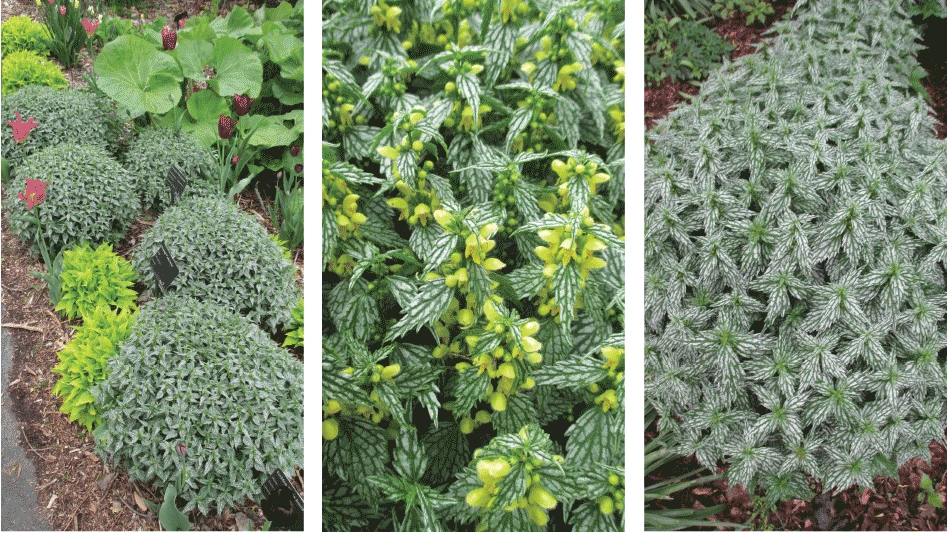 Coreopsis, commonly referred to as tickseed, has become a staple in landscapers’, designers’ and gardeners’ palette of plants to use for perennial borders and mass plantings. While many interesting selections are widely available, one new selection with an unusual flower form that is well worth searching out is Coreopsis Pinwheel.
Coreopsis, commonly referred to as tickseed, has become a staple in landscapers’, designers’ and gardeners’ palette of plants to use for perennial borders and mass plantings. While many interesting selections are widely available, one new selection with an unusual flower form that is well worth searching out is Coreopsis Pinwheel.
Pinwheel has light, buttery-yellow flower petals with an unusual trumpet shape and a whitish flared tip. With trumpet-shaped petals protruding from a dark-orange center, the overall appearance resembles that of a pinwheel whirling in the wind. Flowers are approximately 1 inch in diameter and at peak bloom can exceed 150 per plant.
Many flowers appear
Sitting atop a rounded mound of fine, lacy foliage, plants grow 32 inches in diameter by 24 inches tall. Flowering will occur on first-year plants and begins in early summer. Since the plant is a sterile hybrid, it will continue to bloom repeatedly until the first hard frost. A light shearing once or twice during the growing season will rid the plant of spent blooms and help to promote new flower heads and stem growth.
It’s hardy in USDA Hardiness Zones 6-9 (potentially 5 if provided with excellent drainage). The plant is versatile in that it can take heat and humidity and still have a knockout display. Once established in the ground, it becomes fairly drought tolerant, making it a suitable plant for many regions of the country.
{sidebar id=28}
Growing is straightforward
Growing Pinwheel is rather straightforward and easy. For optimal growth, provide a moist but well-drained medium, preferably with coarse material mixed in. Allow the medium to dry slightly between waterings. Full-sun exposure is critical for initiating flowering and will also result in the plant having a more compact and full habit.
When it comes to fertility, less is better since excessive fertilizer leads to stem and foliage growth that becomes leggy and flops. A liquid feed in the range of 75-150 parts per million will meet the plant’s nutritional needs. The expected finish time of a 1-gallon container from a 72-cell-sized plug is eight to 10 weeks.
Pinwheel has few if any pest or disease problems with the exception of aphids that sometimes can be encountered in greenhouse settings.
Asexual propagation is prohibited, so plants must be sourced either from a liner supplier or from a wholesaler as finished material.
Pinwheel is an extremely versatile perennial with many uses. The buttery flowers mix well with other plants in mixed containers. It makes a stunning combination plant in mixed perennial borders, especially with Echinacea. In mass plantings it makes a dramatic statement that can be seen even when driving by at high speeds. Being loved by butterflies but generally avoided by deer, it also fills two of the more emerging needs of the gardening public.
Specifics
Name: Coreopsis Pinwheel
Common name: Pinwheel tickseed.
Description: Soft, buttery-colored fluted flowers float above dense mounds of lacy foliage.
Hardiness: USDA Hardiness Zones 6-9 (potentially Zone 5 with excellent drainage).
{sidebar id=2}
- Erik Petersen, Chimera Gardens, Silverton, Ore.
June 2008
Latest from Nursery Management
- NewGen Boxwood added to Proven Winners ColorChoice line
- Terra Nova releases new echinacea variety, 'Fringe Festival'
- American Horticultural Society names winners of 2025 AHS Book Awards
- Nufarm announces unified brand
- American Horticultural Society announces winners of 2025 Great American Gardeners Awards
- Shifting the urban environment
- The Growth Industry Episode 3: Across the Pond with Neville Stein
- What's in a name?





